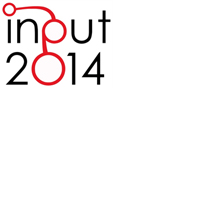Designing Mobility in a City in Transition. Challenges from the Case of Palermo
Abstract
Transport policy is one of the most crucial sectors in the process of adaptation of contemporary cities to the challenge of sustainable development. For its close relation with social habits and people behaviors, in fact, innovation in transports play a strategic role both in the decreasing of the environmental impact of mobility and in the improvement of the quality of the built environment. To do so, however, cities need to reach a more effective integration between transport policy and land-use planning, as well as taking full advantage by the spreading of new technologies. In this context, this paper discusses the challenges provided by the reshaping of the transport system in the metropolitan area of Palermo, the second larger city in Southern Italy. It attempts to explore, particularly, the potential connections between the future “hard factors” of the transport policy – as a result of the programme of infrastructural improvement under realization in the urban area –, with other “soft factors”, such as the practices of social innovation in the field of mobility with the help of ICTs and other opportunities for urban regeneration linked to the reshaping of the transport system.Downloads
References
Bertolini L. (2012), “Integrating Mobility and Urban Development Agendas: a Manifesto”, disP, n. 188, pp. 16-26.
Cervero R. (1998), The Transit Metropolis: A Global Inquiry, Island Press, Washington.
Cittalia (2009), Le città mobili: Rapporto Cittalia 2009, Roma.
Curtis C, Renne J.L., Bertolini L. (eds.) (2009), Transit Oriented Development: Making it Happen, Ashgate, Farnham.
Eames M., Dixon T., May T., Hunt M. (2013), “City futures: exploring urban retrofit and sustainable transitions”, Building Research & Information, n. 41(5), pp. 504-516.
Grieco M., Urry J. (2012), Mobilities: New Perspectives on Transport and Society, Ashgate, Farnham.
ISTAT (2012), Indicatori Ambientali Urbani 2011, Roma.
Kingsley D., Urry J. (2009), After the Car, Polity Press, Cambridge.
Romano B. (2006), “Il Piano integrato del trasporto pubblico di massa di Palermo”, Territorio, n. 38, pp. 96-99.
Suzuki H., Cervero R., Iuchi K. (eds.) (2013), Transforming Cities with Transit: Transit and Land-Use Integration for Sustainable Urban Development, The World Bank, Washington.
TomTom (2013), European Traffic Index 2013, on-line: http://www.tomtom.com/en_us/trafficindex/.
UN-Habitat (2011), Global Report on Human Settlements 2011: Cities and Climate Change, Earthscan, London.
Urry J. (2007), Mobilities, Polity Press, Cambridge.
World Bank (2011), Cities and Climate Change: An Urgent Agenda, The World Bank, Washington.

Copyright (c) 2014 Tema. Journal of Land Use, Mobility and Environment

This work is licensed under a Creative Commons Attribution 4.0 International License.
Authors who publish in this journal agree to the following:
1. Authors retain the rights to their work and give in to the journal the right of first publication of the work simultaneously licensed under a Creative Commons License - Attribution that allows others to share the work indicating the authorship and the initial publication in this journal.
2. Authors can adhere to other agreements of non-exclusive license for the distribution of the published version of the work (ex. To deposit it in an institutional repository or to publish it in a monography), provided to indicate that the document was first published in this journal.
3. Authors can distribute their work online (ex. In institutional repositories or in their website) prior to and during the submission process, as it can lead to productive exchanges and it can increase the quotations of the published work (See The Effect of Open Access)
